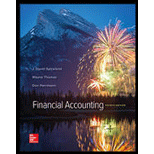
Comparative Analysis
Buckle
American Eagle Outfitters, Inc., vs. The Buckle, Inc.
Financial information for American Eagle is presented in Appendix A at the end of the book, and financial information for Buckle is presented in Appendix B at the end of the book. The stock prices as of February 2, 2013, for American Eagle and Buckle were $20.19 and $47.03, respectively.
Required:
1. Calculate the return on equity for American Magic and Buckle in 2013. Which company has a higher return on equity?
2. Calculate the return on the market value of equity for American Eagle and Buckle in 2013. Which company has a higher return on the market value of equity?
3. Why is the return on the market value of equity for American Eagle and Buckle so much lower than the return on equity?
4. Calculate the price-earnings ratio on February 2, 2013, for American Eagle and Buckle. Basic earnings per share are provided for each company near the bottom of the income statement. Which is trading at a lower price per dollar of earnings?
1.
To calculate: The returns on equity for the year ended January 31, 2015 for Incorporation A and Incorporation B, and determine the company which has a higher return on equity.
Answer to Problem 10.4APCA
Return on equity for the year ended January 31, 2015 for Incorporation A and Incorporation B is 7% and 45.3% respectively. Comparatively Incorporation B has a much higher return on equity than Incorporation A.
Explanation of Solution
Explanation:
Return on equity ratio: It is a profitability ratio that measures the profit generating ability of the company from the invested money of the shareholders. The formula to calculate the return on equity is as follows:
Calculate the return on equity of Incorporation A as follows:
Step 1: Compute the average common stockholders’ equity:
Step 2: Compute the return on stockholders’ equity:
Net income is $80,322
Average stockholders’ equity is $1,152,962 (1)
Therefore, the return on equity of Incorporation A is 7%.
Calculate the return on equity of Incorporation B as follows:
Step 1: Compute the average common stockholders’ equity:
Step 2: Compute the return on stockholders’ equity:
Net income is $162,564
Average stockholders’ equity is $358,604 (2)
Therefore, the return on equity of Incorporation B is 45.3%.
2.
To calculate: The dividend yield for both Incorporation A and Incorporation B for the year ended January 31, 2015, and determine the company which has a higher dividend yield.
Answer to Problem 10.4APCA
The dividend yield for the year ended January 31, 2015 for Incorporation A and Incorporation B is 3.6% and 7.2% respectively. Comparatively Incorporation B has a much higher dividend yield than Incorporation A.
Explanation of Solution
Explanation:
Dividend yield:
Dividend yield ratio indicates how much percentage of share prices a company pays out in the form of dividends price. The formula to calculate the dividend yield percentage is as follows:
Calculate the dividend yield for Incorporation A as follows:
Hence, the dividend yield of Incorporation A is 3.6%.
Calculate the dividend yield for Incorporation B as follows:
Hence, the dividend yield of Incorporation B is 7.2%.
3.
Answer to Problem 10.4APCA
The price earnings ratio for Incorporation A and Incorporation B for the year ended January 31, 2015 is 33.4 and 14.0 respectively. Comparatively Incorporation B is trading at a lower price per dollar of earnings than Incorporation A.
Explanation of Solution
Price-Earnings ratio:
Price-Earnings ratio is a measure of profitability of a firm. In other words, price-earnings ratio shows that how the stock is trading relative to current earnings. The following formula can be used to calculate price-earnings ratio as follows:
Determine the price-earnings ratio for Incorporation A as follows:
Hence, the price-earnings ratio for Incorporation A is 33.4.
Determine the price-earnings ratio for Incorporation B as follows:
Hence, the price-earnings ratio for Incorporation B is 14.0.
Want to see more full solutions like this?
Chapter 10 Solutions
FINANCIAL ACCOUNTINGLL W/CONNECT >IC<
- Please provide the correct answer to this general accounting problem using accurate calculations.arrow_forwardI need help solving this general accounting question with the proper methodology.arrow_forwardI need help finding the accurate solution to this general accounting problem with valid methods.arrow_forward
- Please explain the solution to this general accounting problem with accurate principles.arrow_forwardI am looking for a reliable way to solve this financial accounting problem using accurate principles.arrow_forwardI need help with this financial accounting problem using proper accounting guidelines.arrow_forward
- Can you demonstrate the accurate steps for solving this financial accounting problem with valid procedures?arrow_forwardI am looking for the correct answer to this general accounting question with appropriate explanations.arrow_forwardI am looking for help with this general accounting question using proper accounting standards.arrow_forward
 Cornerstones of Financial AccountingAccountingISBN:9781337690881Author:Jay Rich, Jeff JonesPublisher:Cengage LearningCentury 21 Accounting Multicolumn JournalAccountingISBN:9781337679503Author:GilbertsonPublisher:Cengage
Cornerstones of Financial AccountingAccountingISBN:9781337690881Author:Jay Rich, Jeff JonesPublisher:Cengage LearningCentury 21 Accounting Multicolumn JournalAccountingISBN:9781337679503Author:GilbertsonPublisher:Cengage Financial Reporting, Financial Statement Analysis...FinanceISBN:9781285190907Author:James M. Wahlen, Stephen P. Baginski, Mark BradshawPublisher:Cengage Learning
Financial Reporting, Financial Statement Analysis...FinanceISBN:9781285190907Author:James M. Wahlen, Stephen P. Baginski, Mark BradshawPublisher:Cengage Learning PFIN (with PFIN Online, 1 term (6 months) Printed...FinanceISBN:9781337117005Author:Randall Billingsley, Lawrence J. Gitman, Michael D. JoehnkPublisher:Cengage Learning
PFIN (with PFIN Online, 1 term (6 months) Printed...FinanceISBN:9781337117005Author:Randall Billingsley, Lawrence J. Gitman, Michael D. JoehnkPublisher:Cengage Learning Financial Accounting: The Impact on Decision Make...AccountingISBN:9781305654174Author:Gary A. Porter, Curtis L. NortonPublisher:Cengage Learning
Financial Accounting: The Impact on Decision Make...AccountingISBN:9781305654174Author:Gary A. Porter, Curtis L. NortonPublisher:Cengage Learning Managerial Accounting: The Cornerstone of Busines...AccountingISBN:9781337115773Author:Maryanne M. Mowen, Don R. Hansen, Dan L. HeitgerPublisher:Cengage Learning
Managerial Accounting: The Cornerstone of Busines...AccountingISBN:9781337115773Author:Maryanne M. Mowen, Don R. Hansen, Dan L. HeitgerPublisher:Cengage Learning





